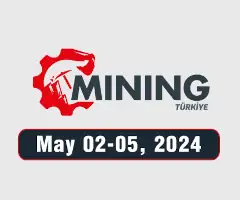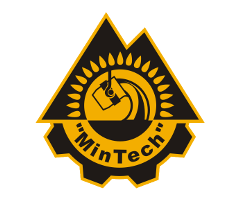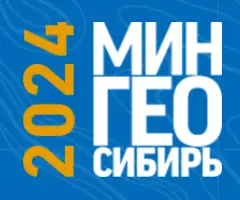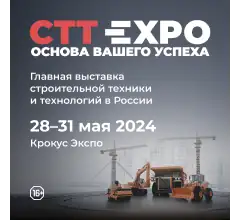A method of predicting hydrogen sulfide accumulation zones in sylvinite layers of potash mines and rapid determination of rock gas content by hydrogen sulfide
![]() A.N. Zemskov1, A.V. Nikolaev2, D.D. Zhebelev2
A.N. Zemskov1, A.V. Nikolaev2, D.D. Zhebelev2
1 Giprotsvetmet JSC, St. Petersburg, Russian Federation
2 Perm National Research Polytechnic University, Perm, Russian Federation
Russian Mining Industry №1 / 2024 стр. 60-64
Abstract: Intensification of potash salt mining, widespread use of high-performance continuous miners, involvement of gasbearing formations in mining are accompanied by release of natural poisonous gases into the atmosphere of mine workings, which explains the need to ensure safe working conditions for the miners. The article presents the researche results that helped to develop a methodology for predicting accumulation zones of one of the most hazardous poisonous gases, i.e. hydrogen sulfide. A correlation was established between the hydrogen sulfide concentration, presence of organic substances and the content of magnesium chloride in the rocks. The article describes methods to determine the accumulation areas of hazardous sulfurcontaining gases based on the trench sampling and laboratory test data, which makes it possible to take timely protective measures to ensure safety of the miners. The developed method is based on creation of the correlation fields for various geochemical attributes such as the NaCl, KCl, MgCl2 content and others. A close correlation between the content of organic carbon in the rocks and magnesium chloride indicates the degree of salt recrystallization, as evidenced by an increase in the hydrogen sulfide content. In addition, the article describes an express method to determine the gas content in rocks, which enables a quick and accurate assessment of hydrogen sulfide concentration directly in the mine workings, thus providing the possibility of prompt response to the hazards. Thus, the methodology proposed by the authors serves not only to identify the potentially hazardous areas, but also to prevent dangerous situations associated with the release of poisonous gases in potash mines. The research and practical approaches described in the article as well as the developed recommendations contribute to enhancing the efficiency of mine ventilation, which in turn leads to minimization of the risks to health and life of the miners.
Keywords: gas content of rocks, hydrogen sulfide, organic matter, trench sampling, magnesium chloride, gas protective breathing masks
Acknowledgements: The reported study was funded by RFBR and Perm Territory, project number 20-45-596025.
For citation: Zemskov A.N., Nikolaev A.V., Zhebelev D.D. A method of predicting hydrogen sulfide accumulation zones in sylvinite layers of potash mines and rapid determination of rock gas content by hydrogen sulfide. Russian Mining Industry. 2024;(1):60–64. (In Russ.) https://doi.org/10.30686/1609-9192-2024-1-60-64
Article info
Received: 13.12.2023
Revised: 15.01.2024
Accepted: 17.01.2024
Information about the authors
Alexander N. Zemskov – Dr. Sci. (Eng.), Professor, Deputy Director for Science and Innovation, Giprotsvetmet Institute, St. Petersburg, Russian Federation; e-mail: This email address is being protected from spambots. You need JavaScript enabled to view it.
Alexander V. Nikolaev – Dr. Sci. (Eng.), Professor of the Department of Mining Electromechanics, Perm National Research Polytechnic University, Perm, Russian Federation; e-mail: This email address is being protected from spambots. You need JavaScript enabled to view it.
Daniil D. Zhebelev – Student of the Faculty of Mining and Petroleum, Perm National Research Polytechnic University, Perm, Russian Federation; e-mail: This email address is being protected from spambots. You need JavaScript enabled to view it.
References
1. Травникова Л.Г., Прасолов Э.М. Химический состав газов солевых отложений. Геохимия. 1985;(12):1766–1778. Travnikova L.G., Prasolov E.M. Chemical composition of gases in salt deposits. Geohimiya. 1985;(12):1766–1778. (In Russ.)
2. Земсков А.Н., Травникова Л.Г. Геохимические аспекты процессов формирования газового состава атмосферы калийных рудников. В кн.: Красноштейн А.Е. (ред.) Аэрология калийных рудников: материалы регион. семинара. Свердловск: УрО АН СССР; 1989. С. 79–32. Zemskov A.N., Travnikova L.G. Geochemical aspects of the gas composition formation processes in potash mine atmosphere. In: Krasnoshtein A.E. (ed.). Aerology of potash mines: Proceedings of a regional workshop. Sverdlovsk, Ural Branch of the Academy of Sciences of the USSR, 1989, pp. 79-32. (In Russ.).
3. Земсков А.Н., Кондрашев П.И., Травникова Л.Г. Природные газы калийных месторождений и меры борьбы с ними. Пермь: Типография купца Тарасова; 2008. 414 с. Zemskov A.N., Kondrashev P.I., Travnikova L.G. Natural gases in potash deposits and measures for their control. Perm, Printing House of Merchant Tarasov, 2008, 414 p. (In Russ.).
4. Медведев И.И., Полянина Г.Д. Газовыделения на калийных рудниках. М.: Недра; 1974. 168 с. Medvedev I.I., Polyanina G.D. Gas emissions in potash mines. Moscow, Nedra Publ., 1974, 168 p. (In Russ.).
5. Земсков А.Н., Полянина Г.Д., Красюк Н.Ф. О выделении ядовитых газов на Верхнекамских калийных рудниках. В кн.: Вентиляция шахт и рудников: сб. науч. тр. Л.: ЛГИ; 1979. Вып. 6. С. 89–86. Zemskov A.N., Polyanina G.D., Krasyuk N.F. On emission of poisonous gases in Verkhnekamsk potash mines. In: Ventilation of mines and mines: Collection of research papers Leningrad, Leningrad State University Publ., 1979, Issue 6. pp. 89-86. (In Russ.).
6. Земсков А.Н., Герцен Т.А. Определение газоносности соляных пород по микровключенным газам. Известия высших учебных заведений. Горный журнал. 1989;(12):40–45. Zemskov A.N., Gertsen T.A. Assessment of gas content in salt rocks based on microoccluded gases. Izvestiya Vysshikh Uchebnykh Zavedenii. Gornyi Zhurnal. 1989;(12):40–45. (In Russ.)
7. Проскуряков Н.М., Ковалев О.В., Мещеряков В.В. Управление газодинамическими процессами в пластах калийных руд. М.: Недра; 1988. 239 с. Proskuryakov N.M., Kovalev O.V., Meshcheryakov V.V. Control of gas-dynamic processes in potash ore beds. Moscow, Nedra Publ., 1988, 239 p. (In Russ.).
8. Земсков А.Н. Исследование выделений природных ядовитых газов в рудниках Верхнекамского калийного месторождения и меры борьбы с ними: дис. … канд. техн. наук. Л.: ЛГИ; 1983. 243 с. Zemskov A.N. Study of natural poisonous gas emissions in the mines of the Verkhnekamskoe potash deposit and measures to control them, Cand. eng. sci. diss., Leningrad, Leningrad State University Publ., 1983, 243 p. (In Russ.).
9. Вахрамеева В.А. О микровлюченном сероводороде в соляных породах Верхнекамского месторождения. В кн.: Труды ВНИИГа. М.: Недра; 1964. Вып. 45. С. 151–155. Vakhrameyeva V.A. On microoccluded hydrogen sulfide in salt rocks of the Verkhnekamskoye deposit. In: Proceedings цof VNIIGa. Moscow, Nedra Publ., 1964, Issue 45. pp. 151-155. (In Russ.).
10. Чудинов Н.К. Методы количественной оценки пиковых фоновых процессов эволюции в практике решения проблемы генезиса природных газов и нефти. В кн.: Проблемы соленакопления. Новосибирск: Наука – Сибирское отделение; 1977. Т. 11. С. 292–301. Chudinov N.K. Methods of quantitative assessment of the peak background evolution processes in practical solution of the gas and oil genesis problem. In: Issues of salt accumulation. Novosibirsk, Nauka Publ. – Siberian Branch, 1977, Vol. 11, pp. 292-301. (In Russ.).
11. Вассоевич Н.Б. Основные закономерности, характеризующие органическое вещество современных и ископаемых осадков. В кн.: Природа органического вещества современных и ископаемых осадков. М.: Наука; 1973. С. 11–59. Vassoevich N.B. Basic regularities characterizing the organic matter of recent and fossil sediments. In: The nature of organic matter in recent and fossil sediments. Moscow, Nauka Publ., 1973, pp. 11-59. (In Russ.).
12. Thompson J.W., Gray M.K. Hydrogen Sulfide in Potash Mining: A Comprehensive Analysis. New York, NY: Academic Press; 2019, pp. 142–158.
13. Fischer A.L., Schultz N. Organic Carbon Correlations in Mineral Deposits: Global Perspectives. London, UK: Earth Science Publications; 2021, pp. 67–83.
14. Martinez L., Hiroshi Y. Advancements in Toxic Gas Detection in Underground Mining. Sydney, AU: Oceanic Research Institute; 2020, pp. 205–221.





